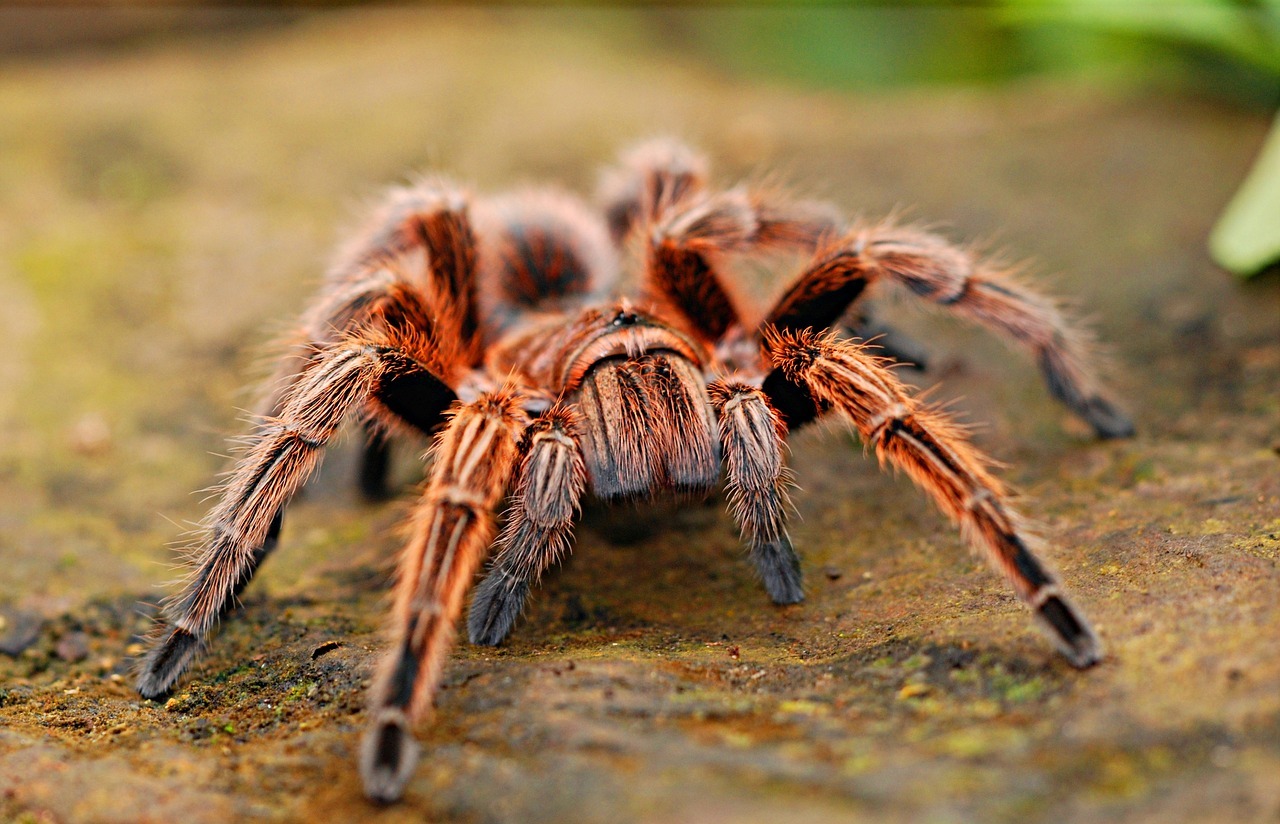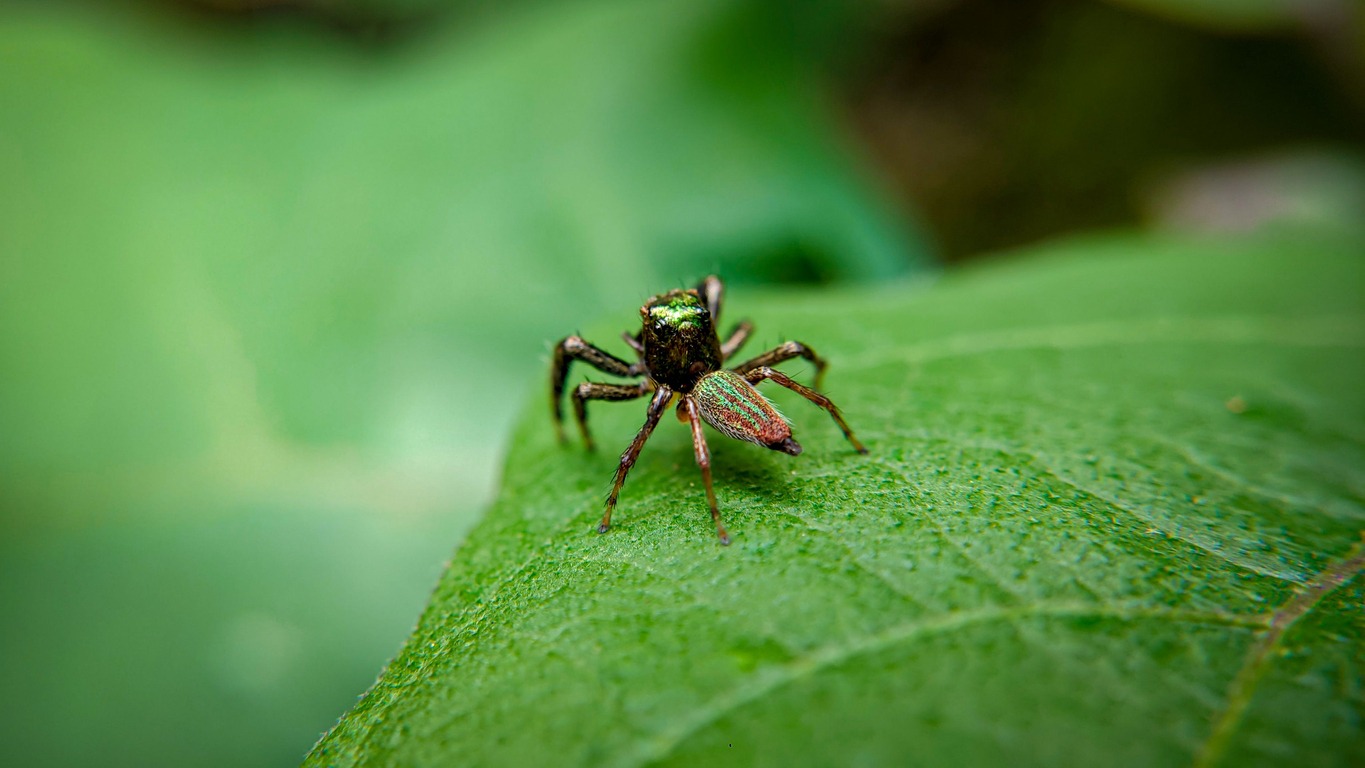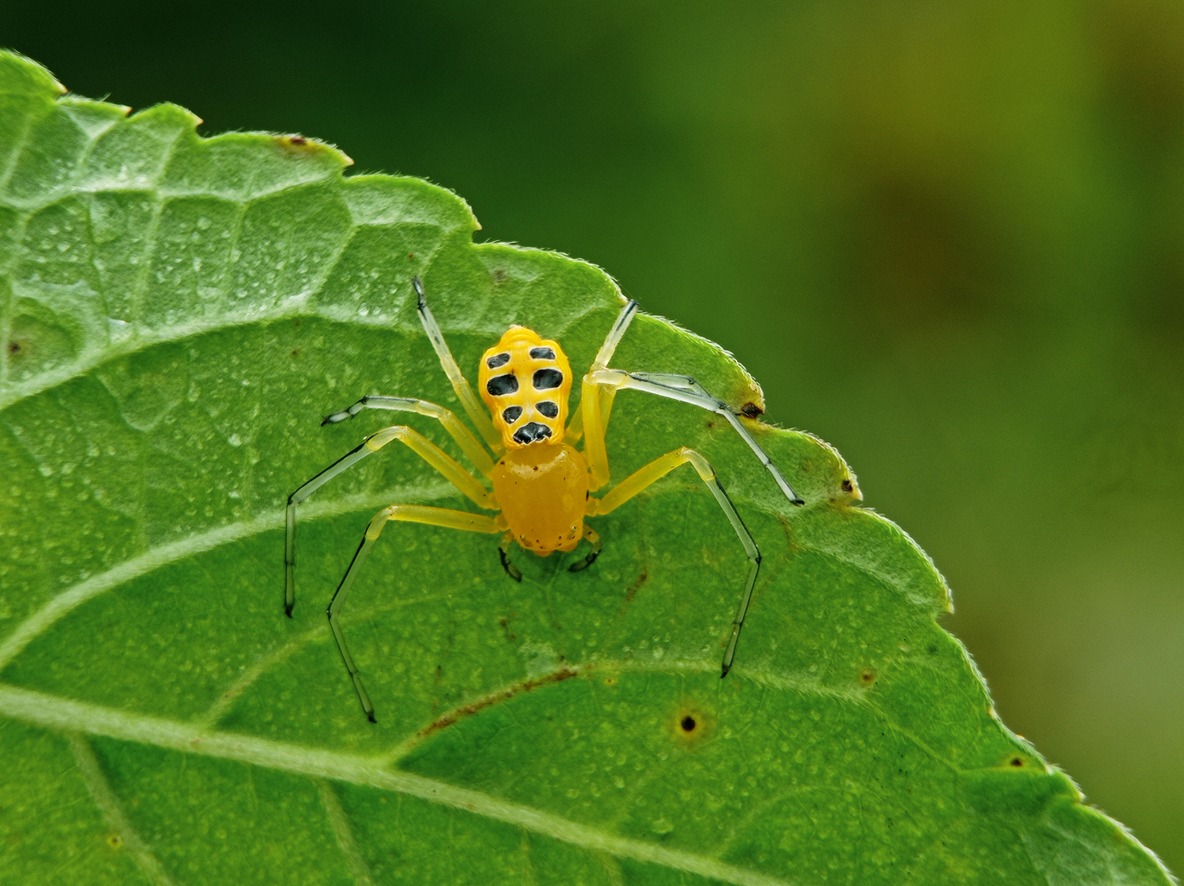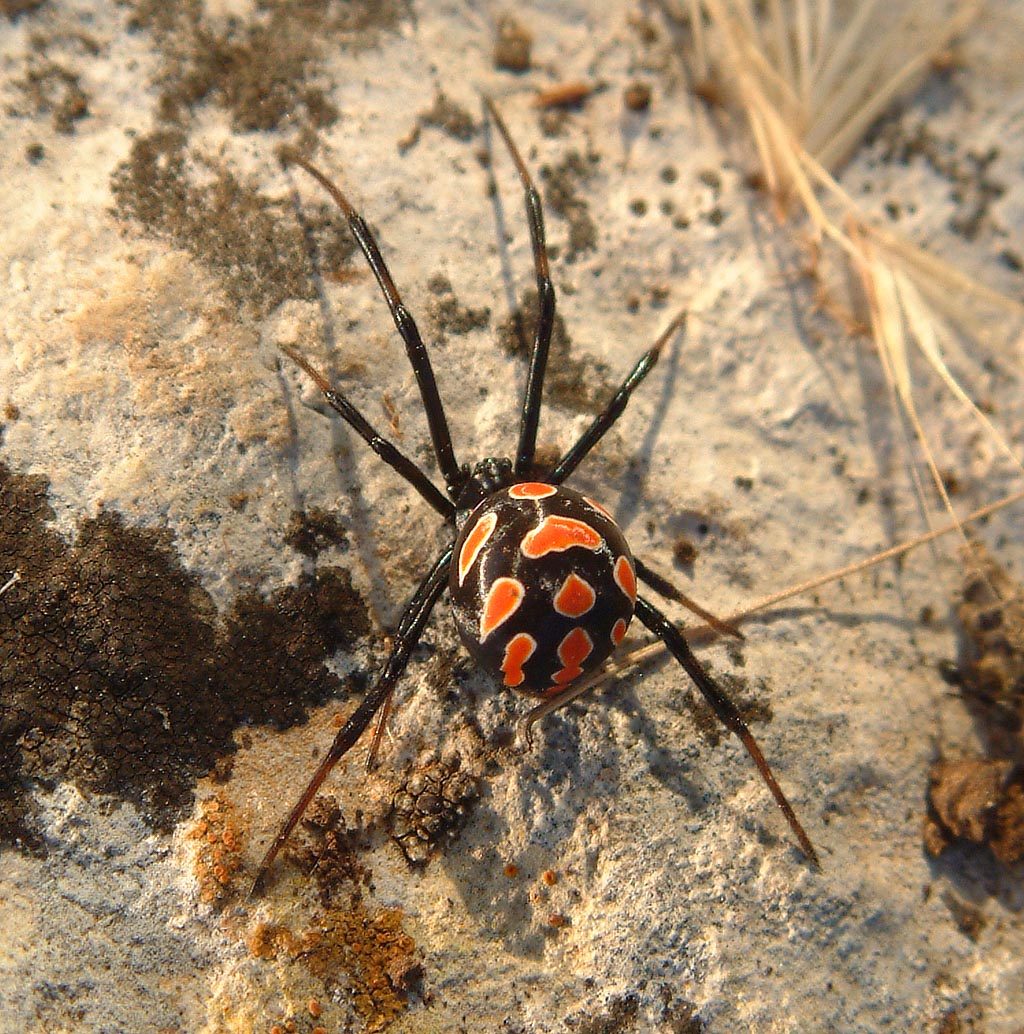There are a lot of people who are creeped out by spiders. In fact, about thirty percent of the people in America are afraid of them. Who wouldn’t, right? With those multiple big eyes and eight long legs. But those are not enough to describe most spiders because Scientists frequently discover new species with unexpected looks and talents, and spiders are not exceptions.
Spiders are also known to be among the most abundant predators in the world and they have adapted to different habitats. And today, we are going to give you a list of the strangest and most unusual spiders on Earth. If you have arachnophobia, you may not want to view this list, but you still can and see that these creatures are more diverse and fascinating than being creepy.
1. Diving Bell Spider
This is also known as the Water Spider and its scientific name is Argyroneta aquatica. This spider is the only spider in the world to spend nearly most of their time underwater. It is usually found in Europe and Asia and they live in ponds, slow-moving streams, and shallow lakes. The Diving Bell spider cannot take oxygen directly from the water. What it does is it builds an underwater retreat with silk and fills it with air it carries from the surface. Once it is filled with air, the silk retreat becomes bell-shaped and has a silvery shine where it got its name.
The Diving Spider bell feeds on whatever aquatic invertebrate they can capture. This includes backswimmers, water striders, and diverse larvae. Aside from that, they also hunt tadpoles and small fish sometimes.
2. Scorpion-Tailed Spider
This spider is named Scorpion-tailed because of the female’s weird abdomen, ended in a “tail” similar to that of a scorpion. When this spider is threatened, it’s tail arches as a scorpion would. Only female ones have tails and the male ones look like an ordinary spider and are much smaller. They are found in Australia and they seem to be completely harmless.
Discover the intriguing world of the Scorpion-Tailed Spider, a marvel among the strangest and most unusual spiders on our planet. Ever wondered why it’s named so? Our latest post, Why Is the Scorpion-Tailed Spider Named So? sheds light on its unique tail feature and more, revealing the fascinating secrets behind one of nature’s most curious creatures.
3. Whip Spider
Whip Spider or also known as argyrodes colubrinus is also found in Australia. It has a long, thin abdomen that is similar to a snake’s body. Its unusual body is an example of camouflage because it looks like a small twig caught in spider silk. With this, it escapes notice by most predators and it is less spotted by its prey. Its venom is not known how potent but it is usually regarded as harmless because of its docile nature and short fangs.
4. Bird Dung Crab Spider
The bird dung crab spider is one of the most effective camouflages of all animals. It has a body that is covered on blobs and warts that give it the appearance of a fresh piece of bird excrement. Its camouflage has a double function aside from its appearance making it an unappetizing prey for most animals, it also serves as a lure for small, excrement-loving insects which is their favorite prey. This spider is usually found in Asia.
If you’re fascinated by unique spider adaptations, you won’t want to miss learning about the Bird Dung Crab Spider. Check out our detailed post, How Does the Bird Dung Crab Spider Camouflage Itself? to see how this incredible spider masters the art of disguise.
5. Spiny Orb Weaver
This spider is also known as a horned spider. It is a genus that has as many as 70 known species and they are found all around the world. Spiny orb weavers are completely harmless even though they have a frightening appearance. They are also noted for adding small silk flags to the edges of their webs for the birds to see so that they can steer away before getting entangled on the web. This spider can be found all around the world, usually in gardens.
6. Happy Face Spider
The happy face spider is closely related to the black widow spider and it is commonly found in the rainforests of Hawaii. It has strange patterns on its yellow abdomen which often take the form of a smiling face. There are also some which individual marking is less obvious. However, this spider is considered endangered because of its limited range and reduction of its natural habitat.
7. Assassin Spider
This spider is found in Madagascar and parts of Africa and Australia. They have long necks that are designed to support the weight of their enormous jaws. These spiders feed exclusively on other spiders. Even though they have fearsome appearance and name, they are harmless to humans.
8. Peacock Spider
This is another Australian species because it is brightly colored and has a circular flap in the male’s abdomen. Just like peacocks, male spiders raise their flaps like a colorful fan to catch the female’s attention. Aside from that, they also vibrate their hind legs and abdomen for a more dramatic effect.
Discover the fascinating courtship dance of the Peacock Spider, a standout among the unusual spiders we’ve explored. Learn more about how this colorful arachnid attracts its mate in our detailed post How Does the Peacock Spider Attract Its Mate?
9. Myrmarachne Plataleoides
This is an example of Batesian mimicry because it disguises as an unpalatable or dangerous animal of another species. It is a jumping spider whose appearance is similar to a weaver ant. But unlike weaver ants, this type of spider is harmless and shy but pretends to be tough with its look and moves. It is only found in China, India, and South Eastern Asia.
10. Bagheera Kiplingi
This spider is named after the black panther in The Jungle Book named Bagheera, and the book’s author named Rudyard Kipling. It has panther-like agility that is common to all jumping spiders. But this spider is not a predator because it is completely vegetarian. They feed exclusively on acacia buds and nectar. Their agility is used to escape aggressive ants that protect acacia trees from other animals.
11. The Flic-Flac Spider
This spider is a native of the Erg Chebbi desert in southeastern Morocco. It has the ability to cartwheel to be able to escape danger. When a predator threatens this spider, it will leap off the ground and do a series of somersaults, making a quick exit. In fact, a somersaulting robot was built based on its locomotion. And if alarmed, the Flic-Flac spider can even tumble forward at a rate of 6.6 feet per second.
12. Spitting Spider
This spider uses webs to catch prey. It takes aim and fires twin streams of venom-drenched silk out of their fangs. It can release fibers in a wide-arced, zig-zag pattern at a top speed of 62 miles per hour. Aside from its web being coated with venom, it also drips with a super-sticky glue that will shrink and constrict the prey.
If you’re intrigued by the world of unusual spiders, you won’t want to miss learning about the spitting spider. Dive into our post titled How Does the Spitting Spider Subdue Its Prey? to see how this unique creature uses its precision and strategy to capture its meals.
13. Fishing Spider
This spider can walk on water because of its hydrophobic coats and a knack for exploiting surface tension. It can be found in North America, Europe, Australia, and New Zealand. They will splay themselves over the surface of lakes or streams to be able to hunt aquatic insects, tadpoles and small fish. They can monitor aquatic vibrations with their sensitive leg hairs as much as 18 centimeters below the water’s surface, making it easy for them to catch their prey.
14. Gliding Spider
Out of the many different kinds of spiders, none of them can fly, but there’s one genus that can free-fall like parachutes. Biologists documented an unusual behavior of 59 tree-dwelling spiders of the genus Selenops dropping systematically from tree crowns in Panama and Peru. Majority of these spiders steered themselves towards nearby trees and land safely on the trunks.
15. Two-Tailed Spider
This spider does not spin a web. It simply lies and wait on a tree or rock and sits there perfectly until its prey comes along. Once its target is in range, it will swiftly attack it. But if something larger than it comes, it can move away faster than you can blink.
16. Funnel-Web Spider
This spider can be found in Australia. It is anti-social and often stays away from people. However, people come in contact with them when male funnel-web spiders come out during the mating season to find a female. That is very dangerous because this spider can kill a human in just 15 minutes because of its venom.
If you’re intrigued by the world of peculiar and extraordinary spiders, you might find the funnel-web spider particularly fascinating. Known for their potent venom, these spiders stand out as some of the most venomous on Earth. Curious about what makes the funnel-web spider’s venom so powerful? Check out our detailed post, Why Are Funnel-Web Spiders Considered Highly Venomous? to get the full scoop on these remarkable creatures and their venom’s impact.
17. Tree Stump Orb Weaver
When you’re out in the woods, you might not even notice that a spider is watching you. It’s because, over millions of years, this spider has gained the ability to look like a tree. That’s why it is called Tree Stump orb weaver.
18. Ladybird Mimic
This spider has a body that looks just like a ladybug. The ladybird mimic might look harmless, but it is only its way to be able to catch prey easily. Once its target gets near it, it will immediately grasp it.
19. Huntsman
This spider usually avoids humans but there are rare cases that they will appear and won’t leave. This spider is gargantuan and aside from that, it is also venomous. Its bite won’t kill a human, but it will surely hurt and would cause swelling. Huntsman spiders are also found in Australia.
In regions where they are common, such as in Australia, Huntsman spiders often provoke fear due to their large size and fast movements. However, they are beneficial in controlling insect populations and are generally harmless to humans. Most Huntsman spider species are not endangered and are quite common in their respective habitats. They play an important role in the ecosystem as both predators and prey, contributing to the ecological balance.
20. Eight-Spotted Crab Spider
This spider was discovered in 1924 in Singapore. It has a spotted body that looks really creepy, making it seem like it’s designed specifically for Halloween. This spider is very reclusive and only a very few have been seen in the wild.
These are some of the strangest and most unusual spiders that you can find here on Earth. They all sure look very strange and creepy as well, but most of them are harmless even though they appear to be scary. And regardless of how they look, they all have fascinating abilities to be able to survive.
21. Ogre-Faced Spider
The Ogre-Faced Spider, also known as net casting spiders, belongs to the Deinopidae family, characterized by stick-like elongated spiders. These spiders have a unique hunting technique where they stretch a web across their front legs before propelling themselves forward to catch prey.
The special webs can stretch two to three times their relaxed size, entangling any prey that comes in contact. Ogre-faced spiders are best known for their night vision, especially the posterior median eyes, which are larger and enable accurate net casting in low-light conditions.
They are found in tropical regions worldwide. This shows that these creatures are adaptable to different types of climate.
22. Wrap-Around Spider
The Wrap-Around Spider, scientifically known as Dolophones conifera, is native to Australia and is part of the Araneidae family. Its name stems from its remarkable ability to flatten and wrap its body around tree limbs.
During the day, these spiders take on a camouflaged form on tree branches and trunks, showcasing their adaptive behavior. Found in Western Australia, the Wrap-Around Spider displays a unique combination of web-dwelling behavior and ground travel.
23. Mirror Spider
Thwaitesia argentiopunctata, also known as the sequined spider or mirror spider, is a species found throughout Australia. With a body length of around 3 mm for males and 4 mm for females, these spiders exhibit an attractive pattern on their abdomen with cream, green, yellow, and red colors.
What sets them apart is their reflective silvery patches on the abdomen, resembling sequins. These reflective scales can change size based on the spider’s perception of threat, a unique adaptation.
The Mirror Spider, belonging to the genus Thwaitesia, demonstrates a fascinating interplay of color and reflective features for both survival and communication.
24. Spiny-Backed Orb Weaver
The Spiny-Backed Orb Weaver, scientifically known as Gasteracantha cancriformis, is a distinctive orb-weaver spider widely distributed in the New World.
Females of this species have a body length of 5–9 mm and feature six abdominal spine-like projections which gives them a spiky appearance. The coloration of their abdomen varies, with white or yellow uppersides adorned with black spots. Males, much smaller in size, play a crucial role in reproduction before both males and females reach the end of their relatively short lifespan.
Found in North and South America, this spider thrives in woodland edges and shrubby gardens.
25. Pink Toe Tarantula
The Pink Toe Tarantula, scientifically known as Avicularia avicularia, is a species native to South America, including countries like Venezuela, Guyana, and Brazil. Recognized for its dark-colored body and pinkish feet, it undergoes a fascinating color reversal as juvenile specimens.
Once fully grown, it can reach up to six inches in length. Pink Toe Tarantulas have a short lifespan, with males living 2–3 years and females living between 6–9 years. They exhibit dimorphism, with males having uniformly barbed urticating hairs.
As ambush predators, they use webbing for trapping prey, displaying various behaviors like hunting, foraging, and construction. Their diet primarily consists of insects, showcasing their adaptability in capturing different prey types.
The Pink Toe Tarantula is known for its defensive mechanisms. The main ways they hunt is with urticating hairs and biting. Their venom is considered mild compared to other tarantula species.
Spiders and Poison – Do They Go Together?
Spiders, being an essential part of the ecological balance, are often misunderstood creatures. Most spiders are harmless to humans, but a few species are venomous enough to pose a health risk. Here’s an overview of some of the more well-known venomous spiders:
- Black Widow Spiders (Latrodectus species):
- Location: Found in various regions across the world, including the United States, southern Europe, and Asia.
- Identification: Known for the distinctive red hourglass shape on the underside of their abdomens.
- Venom: Their venom contains a neurotoxin called latrotoxin, which can cause severe pain, muscle rigidity, vomiting, and sweating. While bites can be serious, they are rarely fatal, especially with prompt medical treatment.
- Brown Recluse Spiders (Loxosceles reclusa):
- Location: Common in the central and southern United States.
- Identification: They have a violin-shaped mark on their back.
- Venom: Their venom can cause significant local tissue damage, known as necrosis, leading to large ulcers and systemic symptoms. Fatalities are rare.
- Brazilian Wandering Spiders (Phoneutria species):
- Location: Found in South and Central America.
- Identification: Large and brown with a hairy body. They are aggressive and highly territorial.
- Venom: Their venom can cause intense pain, paralysis, and breathing problems. In some cases, bites can be fatal.
- Sydney Funnel-Web Spiders (Atrax and Hadronyche species):
- Location: Native to eastern Australia, particularly around Sydney.
- Identification: Large, bulky, and black spiders with shiny heads and thoraxes.
- Venom: Highly toxic and fast-acting, their venom can cause severe symptoms, including death, particularly in children. However, an effective antivenom has been available since the 1980s.
- Hobo Spiders (Eratigena agrestis):
- Location: Found in the Pacific Northwestern United States and parts of Europe.
- Identification: They have a brown body with a pattern of darker brown and yellow markings.
- Venom: Initially thought to cause necrotic lesions similar to those of brown recluse spiders, recent studies suggest their venom isn’t as dangerous as once believed.
For most spider bites, treatment includes cleaning the wound, applying ice to reduce swelling, and using over-the-counter pain relievers. However, in the case of bites from these venomous spiders, seeking immediate medical attention is crucial. Antivenom treatment is available for some, like the black widow and the Sydney funnel-web spider.
8 Weird Facts about Spiders
Organic beans are the beans that are produced and processed without using any synthetic fertilizers and pesticides. There are three types of organic beans: dry beans, snap beans, or also known as green beans, and soybeans. Let’s discuss more about these beans below:
1. They are closer than you think
For the record, we are closer to spiders than we think. We are never more than 10 feet away from spiders.
2. They have blue blood
Spiders have blue blood which is kind of weird. An explanation for this is because of the presence of hemocyanin. Hemocyanin, which contains copper, is formed when the oxygen in blood is bound to the iron-containing hemoglobin. The presence of copper gives a blue tint, an unusual one since we are used with blood having a red color.
3. They produce different types of silk
Spiders have different silk glands, which allow them to produce different types of silk. These silks have their own purposes, especially during the creation of their webs or in their movement.
4. They are jumpers, believe it or not
Spiders can leap greater distances. For instance, Dendryphantes rudis can leap 40 times its own length in just one jump! The contraction of their muscles in their abdomen answers this weird but fascinating fact. Moreover, according to Parry and Brown in their book, specifically in The Jumping Mechanism of Salticid Spiders, there is a special liquid that they force into their legs, an evidence of a hydraulic force involvement in their jump.
5. They produce strong and stretchy silk
Spider silk is indeed a strong substance in terms of elasticity and thickness. Believe it or not, spider silk is five times stronger than a strand of steel. Specifically, the Darwin bark spider has the strongest spider silk, and known to be the strongest one made by a living organism.
6. They are sensitive artists
Spiders are sensitive artists, as it is evident in their web’s composition, design and pattern. The creation of spider webs can be affected by various factors, such as chemicals, pollutants, and even drugs such as caffeine and LSD (lysergic acid diethylamide).
7. They digest their food outside their bodies
Strange enough, spiders are the only animals that essentially digest their food outside of their bodies. This is because they do not have teeth and cannot chew their prey. They inject some juices into the body of their prey for it to be liquified. Once broken down, it would be easy for them to suck up using their fang-like mouth parts.
8. The original power lines
If you had an experience of holding spider webs, maybe you’ve noticed that they are quite sticky. This is because small miniscule glue droplets that spiders deposit in them during web building. These glue droplets are actually electrically charged and somehow distorts the electromagnetic field in our planet.
Conclusion
If you have come this far by reading this article, I bet you’ll think that spiders are pretty cool. There may be a myriad of creepy crawlies but spiders indeed captured our interests. These pest-munching arachnids simply fascinates us and we hope that through this article, we were able to impart new knowledge about these strange, unusual spiders here on Earth.




